The following table shows the position of five elements A, B, C, D and E in the modern periodic table.
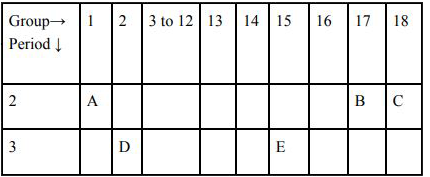
Answer the following giving reasons:
(i) Which element is a metal with valency two?
(ii) Which element is least reactive?
(iii) Out of D and E which element has a smaller atomic radius?
(i) D, As it is on the left side of the table in group 2
(ii) C, as it is in the group 18/ Noble gas
(iii) E, as we move from left to right across a period, atomic radius decreases
Topper's Solved these Questions
- BOOK - CBSE MODEL PAPERCHAPTER - SAMPLE QUESTION PAPER 2020-21 (SCIENCE)EXERCISE - SECTION D5videos
SAMPLE QUESTION PAPER 2020-21 (SCIENCE)
- BOOK - CBSE MODEL PAPERCHAPTER - SAMPLE QUESTION PAPER 2020-21 (SCIENCE)EXERCISE - SECTION B9videos
SAMPLE QUESTION PAPER 2020-21 (SCIENCE)
- BOOK - CBSE MODEL PAPERCHAPTER - SAMPLE PAPER 2023 TERM IEXERCISE - SECTION-E3videos
SAMPLE PAPER 2023 TERM I
Similar Questions
The following table shows the positions of six elements A, B, C, D, E and F in the modern periodic table

(i) Which element will form only covalent compounds ?
(ii) Which element is a metal with valency two ?
(iii) Out of D and E, which one has a bigger atomic radius ? Give reason for your answers.View SolutionThe following table shows the position of six elements A, B, C, D, E and F in the Periodic Table.

Using the above table answer the following questions: (a) Which element will form only covalent compounds? (b) Which element is a metal with valency 2? (c) Which element is a non-metal with valency 3? (d) Write a common name for the family of elements C and F. (e) Out of D and E, which one has a bigger atomic radius and why?View Solution
Knowledge Check
- Question 1 - Select One
The positions of four elements A, B, C and D in the Modern Periodic Table are shown below. Which element is most likely to form an acidic oxide ?
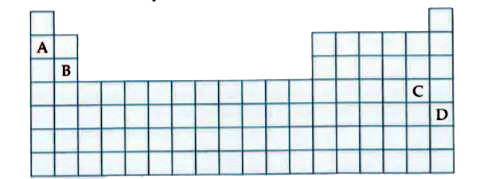 AABBCCDD
AABBCCDD - Question 2 - Select One
Which of the following is the valence shell for the elements of second period of the modern periodic table?
AM shellBK shellCL shellDN shell
The following table shows the position of six elements A, B, C, D, E and F in the period table.

Using the above table answer the following questions :
(a) Which element will form only covalent compounds ?
(b) Which element is a metal with valency 2 ?
(c) Which element is a non-metal with valency of 3 ?
(d) Out of D and E, which one has more atomic radius and why?
(e) Write a common name for the family of elements C and F.View SolutionThe positions of four elements A, B, C and D in the modern periodic table are shown below. Which element is most likely to form an acidic oxide?
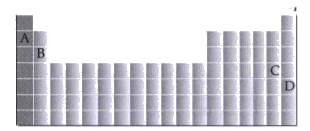 View Solution
View SolutionThe positions of four elements A, B, C and Din the modern periodic table are shown below. Which element is most likely to form an acidic oxide?
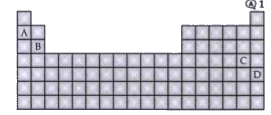 View Solution
View SolutionStudy the following table in which positions of six elements A, B, C, D, E and F are shown as they are in the modern periodic table
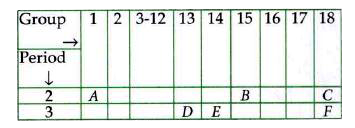
On the basis of the above table, answer the following questions
Name the element which is a metal with valency threeView SolutionStudy the following table in which positions of six elements A, B, C, D, E and F are shown as they are in the modern periodic table
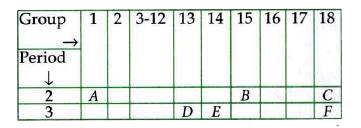
On the basis of the above table, answer the following questions
Name the element which is a non-metal iwth valency threeView SolutionThe position of certain elements in the Modem Periodic Table are shown below.

Using the above table answer the following questions giving reasons in each case:
(i) Which element will form only covalent compounds?
(ii) Which element is a non-metal with valency 2 ?
(iiii) Which element is a metal with valency 2 ?
(iv) Out of H, C and F which has largest atomic size.
(v) To which family does H, C and F belong.View Solution

